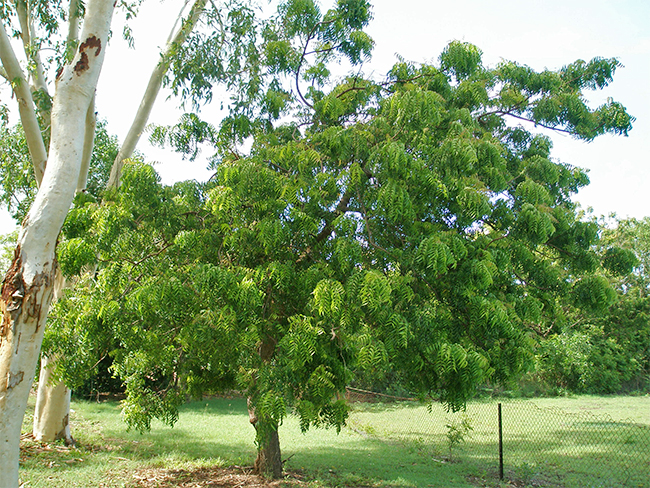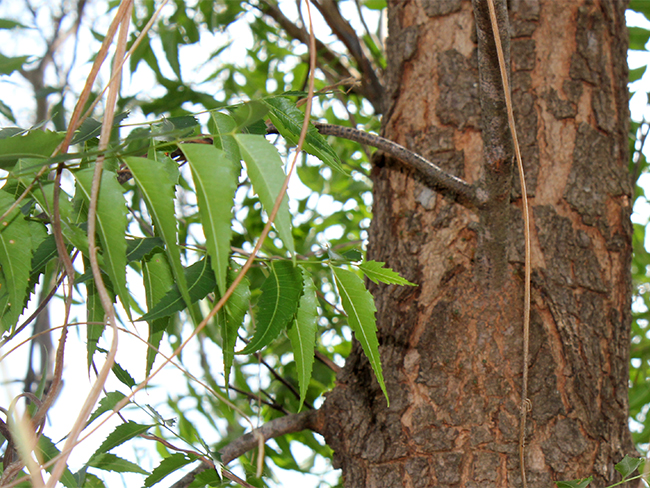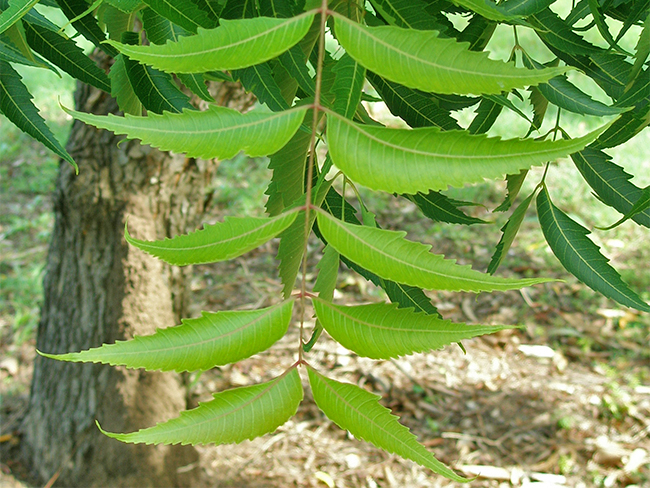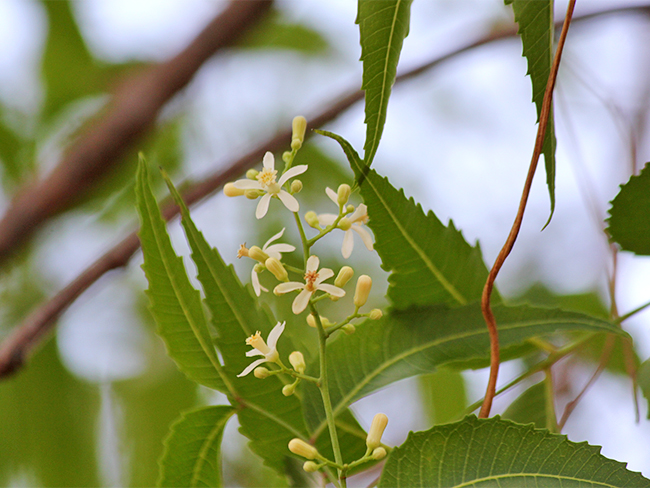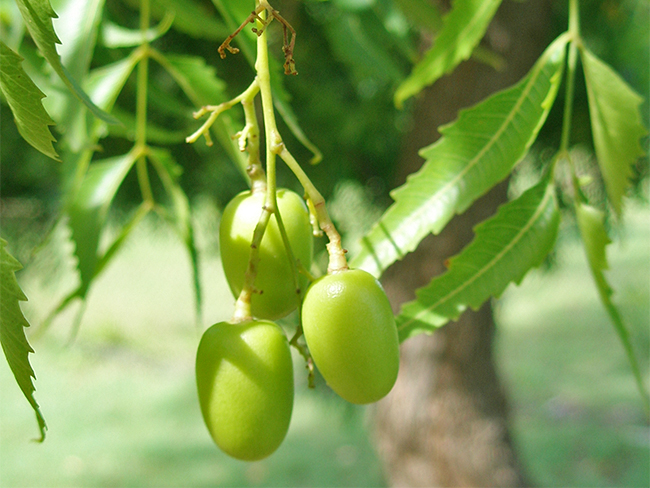Neem
Scientific name: Azadirachta indica
Declaration status: Class B
Neem was declared a Class B weed in 2014.
It's illegal to buy, sell or transport neem plants or seeds in the Northern Territory (NT).
Neem has a statutory weed management plan that outlines the legal requirements for control.
Go to the Territory Stories website to read the:
Mature neem trees in garden settings are not the focus of management efforts and landholders will not be fined for existing plantings. However, removal is encouraged. You must remove all seedlings to prevent further spread.
Neem is believed to be native to the tropical woodlands of northeast India and perhaps other parts of the Indian sub-continent.
Unfortunately, neem was deliberately introduced into Australia as a garden ornamental, for shade and for the production of azadirachtin, a broad spectrum insecticide.
Neem is widely spread across northern Australia where it has proliferated in many creek, river and drainage systems.
In the NT, neem has become well established in the Katherine River system.
It is also prevalent in the Victoria River District, Roper and Gulf districts.
Neem remains a common garden plant in Darwin, Katherine and surrounding rural areas.
Impact
Neem has proven to be highly invasive and competitive.
Their large size and preference for wet areas means that control can be difficult and expensive.
Their deep tap roots and extensive lateral roots allow them to flourish, even in areas affected by seasonal drought.
Neem can have all of the following impacts:
- invades and competes with native plant species even in intact environments
- produces a prolific amount of seed, which are readily dispersed
- can dominate riparian environments.
58% of the Territory is climatically suitable for neem establishment.
Identification
You should use the below images as a guide. There may be other plants or weeds that look similar.
To find out more, get the neem weed note on the Department of Lands,Planning and Environment website.
If you are unsure, contact the Weed Management Branch.
Control
Chemical control
The best time to treat neem is from March to May.
Below is a list of treatment methods that can be used.
| Chemical and concentration | Rate | Situation, method and notes |
|---|---|---|
|
Aminopyralid 8g/L, Triclopyr 300g/L and Picloram 100 g/L Grazon® Extra | 350ml / 100L |
Seedling (individuals and infestations under 2m): Foliar spray, apply when actively growing and non-ionic wetting agent required |
|
Triclopyr 300g/L and Picloram 100 /L Various trade names | 350ml / 100L |
Seedling (individuals and infestations up to 2m): Foliar spray, apply when actively growing and non-ionic wetting agent required |
|
Triclopyr 600g/L Various trade names |
1L / 60L (diesel) 1L / 60L (diesel) |
Seedling (individuals): Basal bark < 5cm stem diameter Adult (individuals or infestation): Cut stump > 5cm stem diameter |
|
Fluroxypyr 333g/L Starane® Advanced |
1.8L / 100L (diesel) 1.8L / 100L (diesel) |
Seedling (individuals): Basal bark < 15cm stem diameter, treat up to 45 cm from ground Adult (individuals or infestation): Cut stump > 15cm stem diameter |
|
Triclopyr 240g/L and Picloram 120g/L Access® |
1L / 60L (diesel) 1L / 60L (diesel) |
Seedling (individuals): Basal bark < 15cm stem diameter Adult (individuals or infestation): Cut stump > 15cm stem diameter |
|
Picloram 20g/kg Tordon® granules | 35 to 45g/m2 |
Apply granules over an area extending from the main stem to 30cm outside the dripline to cover the main part of the root system |
Non-chemical control
Physical removal should be done before fruit grows to stop seed spread.
Hand pulling and grubbing
Weeds, including their roots, are physically pulled out of the ground by hand or using hand tools.
This is an effective method of control for individual weeds and recent outbreaks that haven't released seeds yet, but it requires a lot of labour.
Bulldozing
Bulldozers, chopper rollers or graders are used to clear large weed infestations.
This leaves large areas of soil exposed so follow up control or revegetation should be considered.
Spread
A single mature neem tree can produce up to 50,000 seeds per year.
These seeds are then spread by birds and bats that ingest the fruit.
This has contributed to significant spread along waterways.
Neem trees also produce suckers, which enable dense stands to develop.
Spread prevention
You can prevent the spread of neem by doing all of the following:
- remove neem trees from gardens and landscaping
- follow up to control suckers which regenerate from roots
- chip or dispose of lopped material
- control large trees before the production of fruit - usually November to April
- prioritise the control of seedlings
- map large infestations to help develop a management plan
- target infestations along drainage lines, minor infestations, isolated outbreaks or seedlings first
- monitor areas that you have treated and watch for re-infestations.
Give feedback about this page.
Share this page:
URL copied!
